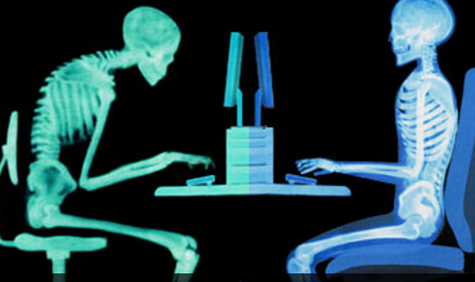
A possible cause of headaches and temporomandibular joint (TMJ) dysfunction is poor posture. Proper postural alignment involves ensuring that the head, shoulders, and hips align vertically when in a sitting position. When standing, they should be aligned with the ankles. This allows the muscles that run from the spine, shoulders, and ribcage to balance the head on top of the spine.
When a person develops a forward head posture (FWP), the head starts to sit in front of that line, causing some muscles, like the posterior occipatels (small muscles the run from the head to the spine) to shorten or get tight. Other muscles, like the longus colli (small muscles along the front of the spine) lengthen and weaken. This muscle imbalance will lead to movement dysfunction in the cervical spine, and potentially in the temporomandibular joint, becoming a source of pain and discomfort.
The human head weighs between ten and 16 pounds. This is similar to a gallon of water. Think of how much harder your muscles have to work when you hold that pail of water out in front of you, compared to holding it at your side. That is what happens to the muscles in your neck. They have to work as much as four times harder to hold your head up as compared to when you are in proper alignment.
When muscles are active, they release lactic acid. This is what makes a person feel sore when they start a new exercise program or do work they aren’t used to. When the muscles in the neck work harder, they release more lactic acid, and over time this may cause your neck to feel stiff and tight.
If you think that your posture isn’t good, have someone take a picture of you from the side and look to see how you are aligned. If you are not aligned, try to make the correction and see how it feels. It will probably feel unnatural, and might even feel painful as you are not used to being in that position. Your body has adapted to your poor posture over time, some muscles lengthening and others shortening, so it will take some time to adjust.
If you need some help identifying whether your posture is optimal or contributing to the symptoms you may be having, please consult a qualified registered health care professional.




















